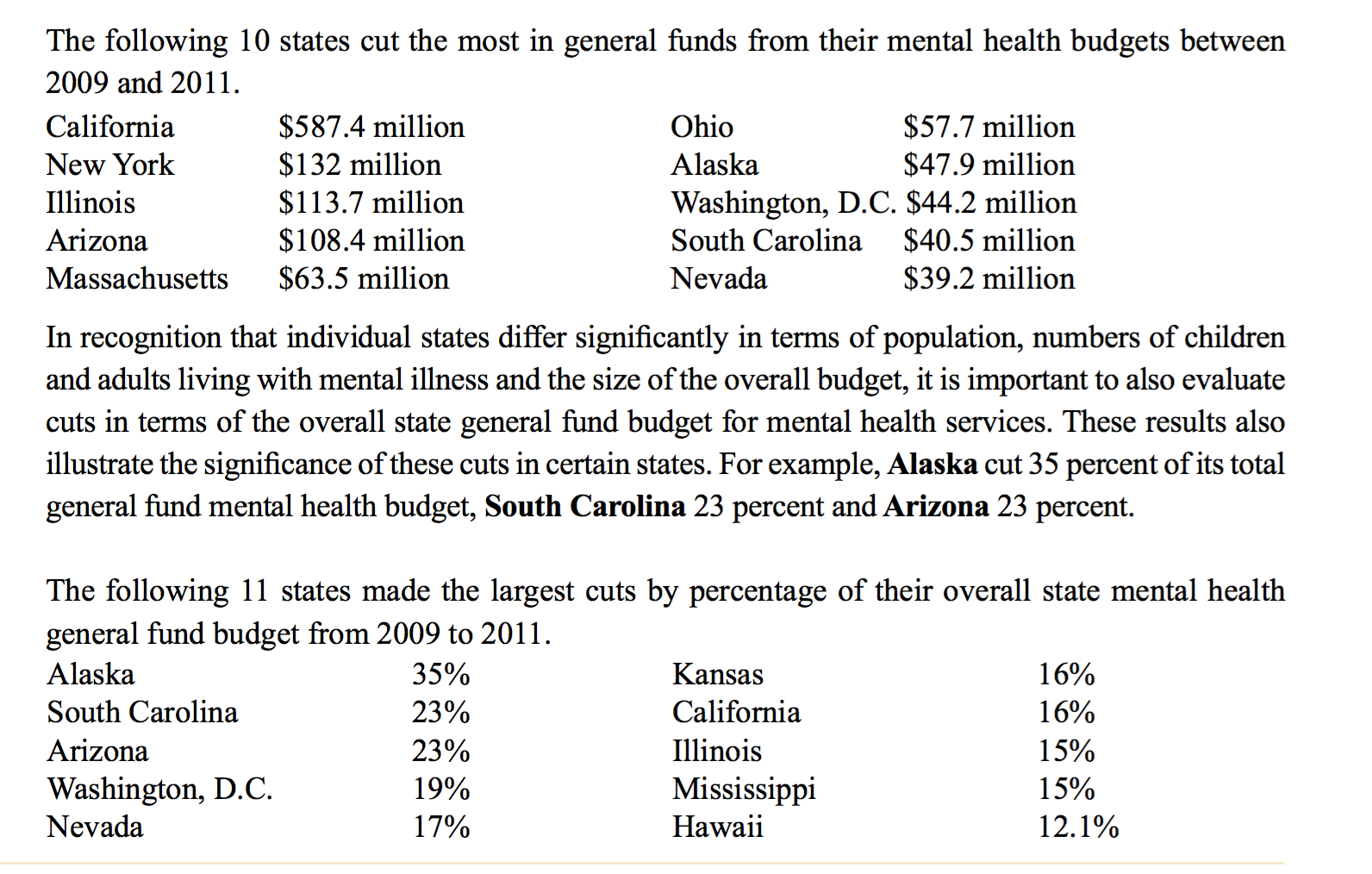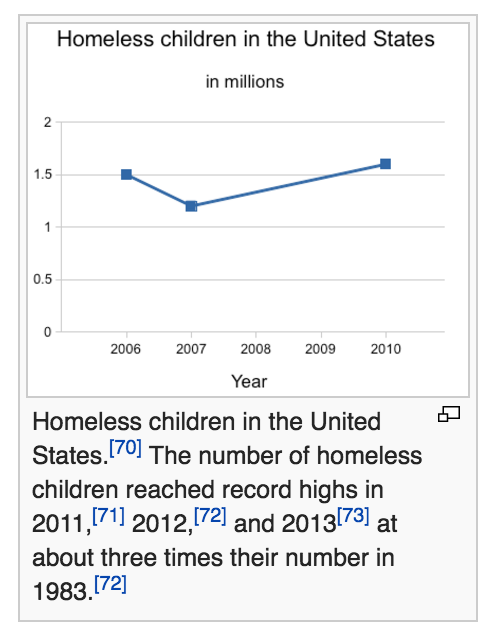As we move across the USA on our trip, we are noticing a large number of homeless. So many men, women, and children laying on the street. After researching, Mental Health Cuts seem to be the main culprit though the list below shares other reasons for homelessness. Check out the increase in children that are homeless. Also, look at the cuts by each state! How many students not being educated in any format? ~Sandy
“In 2004 the United States Conference of Mayors… surveyed the mayors of major cities on the extent and causes of urban homelessness and most of the mayors named the lack of affordable housing as a cause of homelessness…. The next three causes identified by mayors, in rank order, were mental illness or the lack of needed services, substance abuse and lack of needed services, and low-paying jobs. The lowest ranking cause, cited by five mayors, was prisoner reentry. Other causes cited were unemployment, domestic violence, and poverty.”
The major causes of homelessness include:
- The failure of urban housing projects to provide safe, secure, and affordable housing to the poor.
- The deinstitutionalization movement from the 1950s onwards in state mental health systems, to shift towards ‘community-based’ treatment of the mentally ill, as opposed to long-term commitment in institutions. There is disproportionally higher prevalence of mental disorders relative to other disease groups within homeless patient populations at both inpatient hospitals and hospital-based emergency departments.
- The failure of the U.S. Department of Veterans Affairs to provide effective mental health care and meaningful job training for many homeless veterans, particularly those of the Vietnam War.
- Deprived of normal childhoods, nearly half of foster children in the United States become homeless when they are released from foster care at age 18.
- Natural disasters that destroy homes: hurricanes, floods, earthquakes, etc. Places of employment are often destroyed too, causing unemployment and transience.
- People who have served time in prison, have abused drugs and alcohol, or have a history of mental illness find it difficult to impossible to find employment for years at a time because of the use of computer background checks by potential employers.
- According to the Institution of Housing in 2005, the U.S. Government has focused 42% more on foreign countries rather than homeless Americans, including homeless veterans.
- People who are hiding in order to evade law enforcement.
- Adults and children who flee domestic violence.
- Teenagers who flee or are thrown out by parents who disapprove of their child’s sexual orientation or gender identity.
- Overly complex building code that makes it difficult for most people to build. Traditional huts, cars, and tents are illegal, classified as substandard and may be removed by government, even though the occupant may own the land. Land owner cannot live on the land cheaply, and so sells the land and becomes homeless.
- Foreclosures of homes, including foreclosure of apartment complexes which displaces tenants renting there.
- Evictions from rented property.
- Individuals who prefer homelessness and wish to remain off the grid for political and ideological purposes. Often self-identified as Gutter Punks or Urban Survivalists. The Department of Housing and Urban Development rarely reports on this counter-cultural movement since Gutter Punks and similar individuals often refuse to participate in governmental studies and do not seek governmental assistance for ideological or political purposes.
- Neoliberal reforms to the welfare state and the retrenchment of the social safety net.
“In 2013, a Central Florida Commission on Homelessness study indicated that the region spends $31,000 a year per homeless person to cover “salaries of law-enforcement officers to arrest and transport homeless individuals — largely for nonviolent offenses such as trespassing, public intoxication or sleeping in parks — as well as the cost of jail stays, emergency-room visits and hospitalization for medical and psychiatric issues. This did not include “money spent by nonprofit agencies to feed, clothe and sometimes shelter these individuals”. In contrast, the report estimated the cost of permanent supportive housing at “$10,051 per person per year” and concluded that “[housing even half of the region’s chronically homeless population would save taxpayers $149 million during the next decade — even allowing for 10 percent to end up back on the streets again.” This particular study followed 107 long-term-homeless residents living in Orange, Osceola or Seminole Counties. There are similar studies showing large financial savings in Charlotte and Southeastern Colorado from focusing on simply housing the homeless.”
https://en.wikipedia.org/wiki/Homelessness_in_the_United_States



